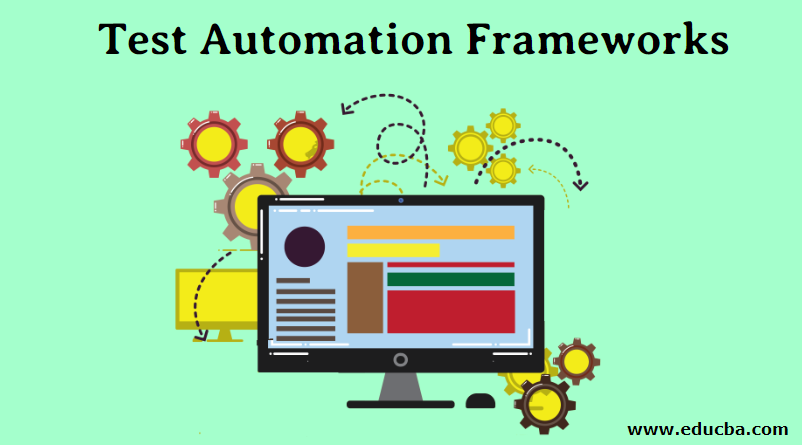Updated March 16, 2023
Introduction to Test Automation Frameworks
Test Automation Framework is a customary standard exercised to create and implement the automation scripts for provisioning various advantages of automation testing over manual testing. The most common factors that are considered before selecting a certain type of Automation Framework are ‘high chances of reusability of the scripts’, ‘lower cost to build’, ‘lower cost to maintain the scripts’, ‘easily transferable’, ‘adequate to have lesser programming knowledge’, etc. A few of the Test Automation Frameworks are generally used for Automation Testing: the Data-Driven Testing Framework, Keyword Driven Testing Framework, Linear Scripting Framework, and Modular Testing Framework.
The tests that the application has to go through before being deployed in the real work environment include several checks that it must pass. The checks actually comprise of the test cases, and as the number of test cases is pretty high to run an efficient check for the application, it takes a lot of time while doing the manual check. And that is the point where the need for a test automation framework was felt. The automation test just makes things happen on its own once the proper command has been given to the system. In simple terms, the automation test picks up every test case given by the developer and tries to check the application using that to make sure that the system can work well in uncommon situations as well.
Test Automation Frameworks
- There are lots of frameworks available in the market to facilitate automation. Selenium, Watir, RobotFramework, Cucumber, Carina are some of the test automation frameworks that have been used very frequently for testing purposes.
- Based on the application and testing requirements, one can choose any among the above-mentioned testing frameworks. They make the testing work very easy by replacing the mechanism of manual testing with of automation testing.
- The test automation frameworks have the inbuilt functionality pre-defined that could be leveraged while developing the solution to convert the manual process of testing to the automated one.
- It does nothing but automatically makes all the work that a person or tester has to do manually. For illustration, suppose one has to put some string in the input box and then have to press the submit button.
- There will be two scenarios, in this case, either one can put the data manually in the input box and then hit enter, or they can use the test automation frameworks which will fill the data and automatically and will hit on submit button as well, and it is the way the automation frameworks helps us.
Types of Test Automation Frameworks
There are four common types of test automation frameworks.
1. Linear Scripting Framework
It is the type of test automation framework which is applicable in the small application. Its functioning includes recording and then playing off the action in order to automate the testing. So it is kind of very basic when it comes to the automation framework and works perfectly with the small-sized application.
2. Modular Testing Framework
It is the kind of automation framework where things are developed in the modules that can then be integrated eventually to complete the testing. Each module has been provided with some particular functionality which is different in every module. They perform only their tasks and leave the rest to the other modules. The result produced by all of the modules is observed collectively in order to get into any decision based on the testing.
3. Data-Driven Testing Framework
It is another important type of testing automation framework which is mainly focused on the data and the logic behind the script. In this framework, the testing is done by separating the script logic from the data. The testing done using this framework is very efficient and can be done to meet particular requirements. There will be lots of things that fall under this framework that makes testing more and more efficient.
4. Hybrid Testing Framework
The hybrid testing framework can be defined as the framework that can be considered the other frameworks’ juice. It combines the advantages of the other frameworks in order to improve the efficiency of automation testing. It integrates how the testing has to be done using any of the least frameworks, which is why it is called a hybrid testing framework. It is the best approach used in order to automate the testing as the output of after performing the test using this framework is very accurate.
Conclusion
The test automation framework that we talked about earlier is the only way to introduce automation in testing. They help us to a very large extent in order to shift the manual testing process to automation testing. It is the best way to mitigate the time taken to complete the testing when there are significant test cases available to check the quality of the application. In addition, to the quality, it makes sure that the application is amply capable of working in uncommon situations as well. In order to learn to work with the automation framework, you will be supposed to have an understanding of Java or other programming languages as they are totally dependent on it.
Recommended Articles
This is a guide to Test Automation Frameworks. Here we discuss the brief overview with types of Test Automation Frameworks, respectively. You can also go through our other suggested articles –


